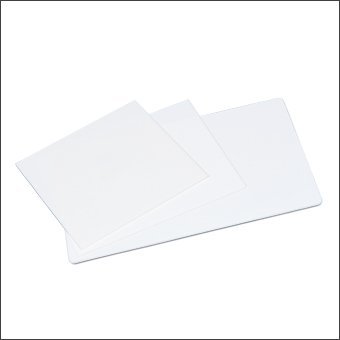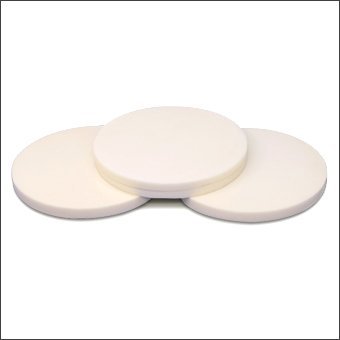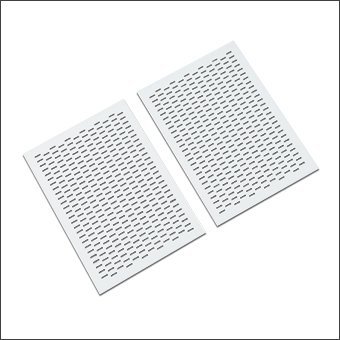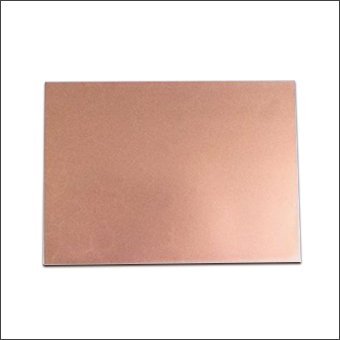Unique Features of ZTA Substrate
Alumina ceramics are the leader of advanced ceramics in terms of practicality and economy, but they are relatively brittle. After alumina is toughened with zirconia, the characteristics of the two materials are perfectly combined.
- Toughness doubled: The fracture toughness of ZTA substrate reaches 5-6 MPa∙m1/2.
- High temperature resistance: Can withstand up to 1500℃.
- Cost advantage: Performance reaches 85% of silicon nitride, while price is only 60%.

Reliable ZTA Substrate Supplier in China
Zirconia toughened alumina ceramic is a composite phase ceramic material with Al2O3 as the matrix and partially stabilized ZrO2 as the toughening phase. Compared with ordinary Al2O3 substrates, ZTA substrates exhibit excellent bending strength and are particularly suitable for applications that require long life and high reliability. Thanks to its excellent heat dissipation, insulation, thermal shock resistance and mechanical strength, ZTA ceramics have become an ideal choice for semiconductor device packaging substrates.
As a leading ZTA substrate manufacturer, we ensure high-purity materials, customizable dimensions, strict QC, batch-to-batch consistency and fast delivery. Our Zirconia Toughened Alumina (ZTA) Substrate is recognized by many customers for its longevity in harsh environments. Does your project require a ZTA substrate solution? Contact us today for a technical consultation!
By Features
Zirconia toughened alumina substrate retains the high hardness and wear resistance of Al2O3 substrate, and also has the advantages of good fracture toughness and high bending strength of ZrO2 substrate, and the price is lower than ZrO2 substrate.
Thickness range: 0.3-1.0mm. Used in power electronic packaging, LED heat dissipation substrates, etc.
Thickness range: 1.0-3.0mm. Used in automotive electronic control modules, IGBT substrates, etc.
Suitable for semiconductors, medical devices, and other fields where precision and performance are critical.
It is an ideal solution for electric vehicle power modules and high-temperature electronic packaging.
ZTA and Silicon Nitride Substrate Selection Guide
In the high-end industrial field, zirconia toughened alumina (ZTA) and silicon nitride (Si3N4) substrates are triggering a “ceramic revolution”. But which material is more suitable for your project? This article will use actual measured data and industry cases to give you a thorough understanding of the pros and cons of the two.
- Mechanical Performance Comparison: Strength vs. Cost Performance
| Property | ZTA Substrate | Si3N4 Substrate |
| Fracture toughness (MPa∙m1/2) | 5-6 | 6-7 |
| Vickers hardness (HV) | 1600 | 1420 |
| Flexural Strength (MPa) | ≥450 | ≥700 |
| Cost Ratio | 1 | 1.4-1.8 |
ZTA has higher hardness, better wear resistance and lower cost, but Si3N4 has better flexural strength.
Case Sharing
A Japanese robot joint manufacturer originally used Si3N4. After switching to ZTA, it not only met the ISO 6474 standard, but also saved 2.7 million US dollars in annual procurement costs.
- Thermal Performance Comparison
| Property | ZTA Substrate | Si3N4 Substrate |
| Max Temperature (Air) (℃) | 1500 | 1400 |
| CTE at 20-800℃ (1×10-6/℃) | 7.2-8.3 | 3-3.2 |
| Thermal Conductivity at 25℃(W/(m・K)) | 26 | 20 |
ZTA has a stronger high temperature resistance, and its coefficient of thermal expansion (CTE) matches that of metals (such as stainless steel 9-10). While silicon nitride’s coefficient of thermal expansion is more compatible with Si/SiC chips (CTE ≈ 4.0), reducing the risk of thermal cycle cracking, and its heat dissipation performance is better.
Case Sharing
An aerospace company used ZTA instead of Si3N4 to make rocket engine sensor substrates, and its lifespan was increased by three times in the extreme environment of 1800℃.
- Suggestions on Model Selection
3.1 Choose ZTA
-Budget-sensitive projects (cost reduction of 30-40%)
-Ultra-high temperature + thermal shock resistance requirements
-Sensor components requiring metal packaging
3.2 Choose Si3N4
– Extreme mechanical loads
– High frequency heat dissipation requirements
– Extremely high dielectric loss requirements
- Conclusion
There is no absolute “best material”, only “the most suitable choice”. What technical challenges are you facing? Welcome to contact us for free selection consultation.
ZTA substrate vs alumina substrate, the core difference is:
- Fracture toughness: The fracture toughness of ZTA (5-6 MPa∙m1/2) is higher than that of alumina (4-5 MPa∙m1/2).
- Thermal shock resistance: ZTA is more capable of withstanding sudden temperature changes (300°C) than alumina (≥200°C).
- Wear resistance: The wear rate of ZTA is 50% lower than that of alumina.
Our standard ZTA substrates contain 10 wt% ZrO2 and are stabilized with 3-5 mol% Y2O3 to ensure phase change toughening effects.
ZTA is an ideal high-temperature sensor substrate with a long-term temperature resistance of 1500℃ (short-term 1800℃), a thermal expansion coefficient that matches most metal electrodes, and a thermal shock resistance that far exceeds that of alumina. It supports thick film/thin film circuit integration.
The measured value of thermal conductivity of ZTA substrate is 26 W/(m・K), the dielectric constant is 10.6 at 1MHz frequency, and the dielectric loss is as low as tanδ≤0.0005.
ZTA substrates are suitable for high-frequency applications below 10GHz, but in higher-frequency fields such as 5G/millimeter waves, it is recommended to use aluminum nitride substrates with higher thermal conductivity.







